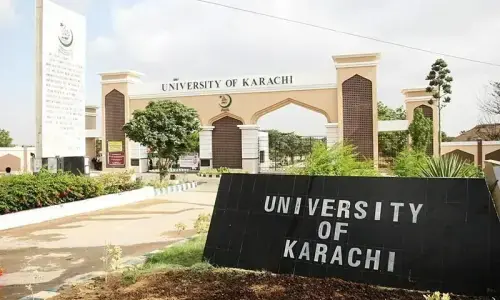On a visit to Mithi and Nagarparkar on the 17th and 18th of July this year, during interactions with friends and fellow-workers, a small collection of brief true tales.
During the Jam Sadiq Ali government in 1992, a certain taluka level food inspector was officially declared and duly recorded to be “dead”. Shortly thereafter, in a second coming, the same individual, with a new name was appointed to the very same position.
About 22 years later, in 2013-14, after having been charged with corruption and being suspended, he has resumed duties in exactly the same position. The identity of the person and this charming case is widely known. Here is a living proof that neither drought nor famine can cause deaths.
The mukhtiarkar of Mithi, Ghulam Mustafa Khoso, confirmed to this writer that the distribution of relief food consignments received from the provincial government for two phases has already been completed. The third phase is awaited. There is no delay on the part of local officials.
In contrast to the image of the conventional, stereotypical bureaucrat who can be both insensitive and incompetent, the present deputy commissioner of Mithi, Asif Ikram (DMG), whom this writer was unable to meet, is very highly spoken of, both for his integrity and professional competence. He has reportedly formulated the draft for a new policy to effectively deal with droughts and other disasters.
Karachi has exported an honest and efficient cop to Mithi. SHO Tariq Memon has taken strong action to curb the sale of addictive new versions of gutka known as “2100” and “Zafri”. He has also initiated other preventive measures including prior warnings and follow-up counselling.
A fine contrast to the endemic absence of doctors in Tharparkar and their unwillingness to serve in remote locations.
Thar drought situation termed alarming
For the first time, at a health centre such as the Nagarparkar taluka hospital is led by the medical superintendent, Dr Shankar Lal, and as many as 10 new doctors have begun to dispense long-needed care where, previously, there were only four doctors.
The new doctors, for the first time, comprise specialists; a woman gynaecologist (posted as a PPHI appointee, not as a regular health department appointee); a paediatrician; a chest diseases specialist and a dental surgeon.
Two new generalist medical officers have also joined duty as 23 more vacancies for doctors remain unfilled. But this is a dramatic improvement. Of the 20 beds in the hospital, on the average 10 to 15 are occupied. About 200 to 250 persons seek care every day at the outpatients department.
There has been no death from malnutrition recorded for the past five years.
Dr Sahib Dino Janji, paediatrician at the Mithi Civil Hospital, informed me that, only six, not 40, children currently admitted at the hospital are suffering from malnutrition.
Causes for their condition do not necessarily have to do with lack of food but with inappropriate feeding practices, failure to take timely steps by parents, etc.
Whether on the Karachi-Hyderabad-Mirpurkhas-Naukot-Mithi-Islamkot-Nagarparkar route or the Nagarparkar-Mithi-Badin-Golarchi-Sujawal-Thatta-Karachi route: the state of the roads is like Pakistan’s democracy, a perpetual work-in-progress, subject to sudden jolts.
The standard ranges from stretches of superb quality to patches of terrible potholes and ditches, the former a delight to drive upon, the latter a nightmare during day or night, particularly because, without any preparatory, cautionary sign, the well-carpeted surface suddenly springs a dip or a break which can test the best of brakes.
On the night of 17th July, driving out of Mithi to Nagarparkar, strong winds spread fresh hope. Lightning silently streaked dark skies. Then about 15 minutes of heavy rain. So heavy at times that the car had to stop because visibility had reduced to virtually zero. Was that a hint of good news to follow soon? Next day, elsewhere as well, families and oxen ploughed fields to prepare for the fulfilment of the promise.
On the tall electric light-poles that line the entrance to Mithi, the flags of the ruling party that have reduced to tatters and rags flap forlornly in the wind. But soon, there will be Independence Day on August 14. Time to raise new flags of harmony and hope.
The writer is the founding president of Baanhn Beli
Published in Dawn, July 22nd , 2014




































